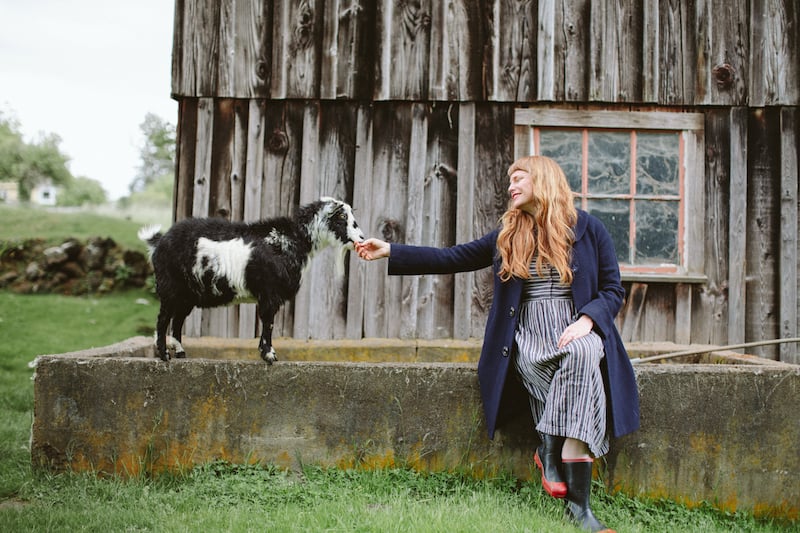
The Bookshelf: Inside the Dreamy Portland Studio of Carson Ellis
Written by Erin Feher
Photography by Paige Jones
If you’ve ever gotten lost in the whimsical world of illustrator Carson Ellis (her books, including Home, Du Iz Tak?, and The Mysterious Benedict Society by Trenton Lee Stewart, conjure up both a homespun nostalgia and an age-appropriate melancholy), you may not be surprised to learn that the artist lives on a endearingly ramshackle farm on the outskirts of Portland with her two sons and her indie-rocker husband, Colin Meloy of the Decemberists. Oh, and lots of llamas. In addition to her catalog of a dozen children’s books, Carson is also the long-time illustrator-in-residence for the Decemberists, and received a Grammy nomination for the design of their 2015 LP, What a Terrible World, What a Beautiful World. She graciously gave us a tour of her beautiful studio space, and opened up about all aspects of her creative process, from how her stories materialize to how motherhood has impacted her work. Click through for the full tour below!
For more inspiration from the authors and illustrators behind some of your favorite children’s books, check out our previous “The Bookshelf” profiles on Christian Robinson, Jon Klassen, Yuyi Morales, and Isabel Sanchez Vegara,
- "I live on a small farm in Oregon and my studio is a little house in a field on my property. It used to be a building for drying nuts—we have hazelnut and walnut trees here. My family thinks it’s funny to call it 'the nuthouse.'"
- Bringing the outdoors in.
- "The woman who sold us this property is a plein air painter, so it was already being used as a studio and was a dreamy place to work right off the bat. I put in a wood stove to make it warmer and a bunch of skylights because natural light is a big deal to me—Oregon winters are dreary and it can be hard to come by. Recently, I hired a friend to build some storage racks, too, which really transformed the space and my relationship to it. I’d been resenting my studio because it was so full of stuff and there was no place to put anything: canvases, cutting boards, packing materials, pads of paper, framed artwork, my sewing machine. They were all just sitting around in piles and the clutter was making me crazy. I didn’t even know how crazy my studio was making me until I got the storage racks built and organized everything. Now it’s paradise."
- "In general, I’m in my studio every weekday from about 10 a.m. until my kids are home from school. Sometimes I work later, until dinner. On very rare occasions, I go back out to work after everyone’s in bed. I’m a night person and love to work late, but I also have to get up around 7 a.m. every weekday morning, so I don’t usually indulge in that. Working at night fires up my brain in a way that makes it hard for me to wind down and go to sleep at a reasonable hour. But I’m an incurable night owl. I just spent time in Montana for an artist’s retreat without my family and I went to bed at about 3 a.m. every night. No matter how long I’ve been getting up early with kids—13 years now—I will snap back into that crazy schedule the moment I’m able."
- A beautiful painting in progress.
- "Always on my desk: mechanical pencils with .5 mm HB lead, nib pens, Higgins india ink, a variety of brown inks, round synthetic watercolor brushes numbers 0-6, gouache, enamel palettes, Muji pens, cold press watercolor paper, sketchbooks, a paper cutter."
- Two artists at work.
- "I live in the suburbs of Portland and my local art supply store is a Michaels. I’m there all the time and I get what I can, but they don’t carry a lot of things. If I can wait until my next trip to town, then I go to Blick or my favorite independently owned Portland place, Columbia Art & Drafting. If I can’t, I buy things online. Art supply stores—being able to wander around them and peruse stuff—are important to me though, so I avoid Amazon when I can, so as not to help put them out of business."
- "When I was a gloomy teenager I loved to write poetry and illustrate it. At some point I came across Outside Over There by Maurice Sendak—a very weird and moody picture book for an indeterminate audience. Not indeterminate—I knew it was a book published for young kids—but it seemed like it was as much a book for gloomy teenagers. Or anybody, really. Anyway, it was the first book I remember seeing that married these two things that I loved to do in such a satisfying way, and I think the fact that it didn’t seem explicitly for children—or not for children—impressed me. Also, I think I found it at a moment that I was wishing I was still a carefree kid, not someone about to be an adult and ill-equipped for it. It must have felt good to get lost in a mysterious book that made me feel little again. Basically, it was a book that made deep sense to me in that moment, and it inspired a life-long obsession with picture books."
- Pretty palettes.
- "I seem to get a decent idea for a picture book only once every two or three years. I have friends who keep long lists of book ideas that they are always prioritizing, tinkering with, and adding to. I do not. I envy this but I can’t do it. It might be because I don’t really have a creative practice that’s based around writing and storytelling—it’s mainly focused on making visual art. It might be because I just suck at coming up with book ideas. Either way, I’ve written three books for kids in the past ten years—the third one I’m working on now—and they all came to me in different ways. The first one, Home, was the product of a lot of thinking and soul searching. The second one, Du Iz Tak?, came to me in a flash when I was lying in bed with my sleeping kid and thinking about the lettuce seeds that had just sprouted in my greenhouse. The third one came to me while I was drawing with my six year old. He said, 'Draw a half room. Everything in it is half. Half a table. Half a chair.' So I drew this half room and I looked at the drawing and thought, 'Oh! That’s a book!' Regardless, they all started with a visual idea, not a narrative one. I did write a manuscript for each book, but when it came time to storyboard them I had a pretty clear idea of what they would look like. The art came first."
- "A literary agent named Steve Malk, a wonderful, brilliant guy, contacted me about 15 years ago to ask me if I wanted to work on kids' books. I did, of course. I’d been aspiring to it since I was a teenager, but I didn’t know how to go about it. I was working mostly as an editorial illustrator at the time and making art for The Decemberists, my husband’s (then boyfriend’s) band. That’s how Steve found me—through the Decemberists—and he got me started as an illustrator of other people’s books. After about ten years of that, and of thinking up, and eventually scrapping, a lot of my own ideas, I wrote Home, my first picture book. Steve liked it and found a publisher for it."
- The aforementioned wood-burning stove.
- And shelves to keep her work organized.
- "I think that kids are open to anything. They don’t have a lifetime of reading behind them, informing their engagement with books. They don’t know what to expect from a narrative yet. They don’t need to see a character grow and develop to be invested. They don’t need a story to have an obvious arc or conflict and resolution. Literature has conventions that are so hard-baked into our reading experiences that we take them for granted as necessary ingredients of a good story. When books deviate from those conventions, some of which feel kind of arbitrary to me, we think those books are strange. But kids don’t know those conventions yet. They understand resonance and they use books as jumping off points for imagining things. Sometimes they like books purely for the enjoyment of picking out animals that they recognize and have just learned to say the names of. They look at illustrations and invent their own stories without prompting. Kids are the best audience because they are down for just about anything. They’re the ultimate avant-garde readers, and I love to think that sometimes, when we make weird books and kids understand them, they teach the adults around them how to understand them, too."
-
Carson and her husband, Colin, collaborated on the Wildwood Chronicles, a series of children's fantasy novels.
- "That kid-centric language is such an abstract, nebulous thing. I doubt anything that could be described this way really exists. But I certainly take a lot of cues from the kids around me. I notice the way they see the world, how they play and talk and manage their relationships, and what they respond to in books. I compare it to my own adult experience. I’m always taking notes."
- "Weirdly, I don’t remember the picture books that I loved when I was little. I don’t even remember Outside Over There from when I was a kid—I just remember rediscovering it in my basement as a teenager. The books that I remember are chapter books and novels: The Chronicles of Narnia, books about horses like Misty of Chincoteague and Black Beauty, those Madeline L’Engle books. Pauline Baynes’ illustrations for the Narnia books have inspired me a lot as an adult."
- "I’ve published two books that I wrote, and I’ve been the illustrator of nine more with a tenth coming out in October. Twelve all together."
- A copy of the Fall 2018 issue of Zoetrope: All Story, which Carson designed and illustrated.
- "I have been lucky. The first book I illustrated, The Mysterious Benedict Society by Trenton Lee Stewart, did very well and certainly felt like a big break."
- "We met in college, over 20 years ago, and have been collaborating on things as long. Having kids changed the way we work, of course. Our days are a lot more structured now and we’re more precious with our studio time. Our kids inhibit our work and they also inspire our work. They help us edit things and give us feedback. It’s hard to tell where work ends and family starts around here sometimes. Fortunately I think we’re pretty good collaborators, Colin and I, especially after all of these years. We still have the occasional fight about a creative difference or insensitively relayed bit of criticism. We’re each a huge fan and brutal critic of the other. So that’s an interesting dynamic in a marriage. Or maybe that’s exactly the dynamic of most marriages? I don’t know. But there’s a lot of love and support and mutual admiration and common obsessions, so it works out."
- "I had been trying to write a picture book for a long time, but I didn’t like any of the ideas I’d come up with. I’ve been collecting and studying picture books since I was a kid, and the prospect of writing my own was daunting. I’d have a story idea and I’d overthink it into oblivion. At some point it occurred to me to start with the illustrations, instead. I thought of books like People by Blexbolex or Cars, Trucks, and Things That Go by Richard Scarry—books that start with art, with joyfully, beautifully, ecstatically made illustrations, and build a story around it. This approach made a lot more sense to me. So, I began with subject matter that I knew I’d have a good time painting: homes. I love to paint houses and environments. And I loved the idea that you could fill these homes with details that would help kids guess at their inhabitants. I wanted to make a book that felt interactive and full of small clues to be discovered and speculated about. I wanted to make a book that suggested a lot of things and asked a lot of questions, but ultimately required kids to provide their own stories."
- "The book that’s coming out in October is called The Shortest Day. It’s a poem about the winter solstice by Susan Cooper. The text is gorgeous and I feel good about the illustrations. It has these sweeping, atmospheric landscapes that I didn’t initially know how to paint. It took forever to figure out how to illustrate it. I learned a lot."
- "I just hope everyone has a nice time reading my books. Ideally, it’s an interactive experience and a dynamic one—something that changes a little bit with each reading. I don’t think much about what people gain by reading books, but I definitely have adults in mind when I write them. Kids and adults read books together, so I don’t think a good picture book is one that an adult can’t find any value in. And, as a mom, I know the very special hell that is reading a book you hate six times in one day—hey, LEGO Ninjago. So, I try to write books that are fun to read for everyone involved. I also try to make books that a kid might understand and love more readily than an adult, but that I hope an adult might come to love through reading it to a kid. I’ve had some experiences with books like this—where I didn’t get it at first, but one of my kids did, and their perspective taught me to open my mind a little. That’s a magical thing when it happens, and definitely something I’m thinking about when I make books."
- "I’m working on a picture book tentatively called In the Half Room. I wrote it, though the general idea was supplied by my younger kid. I don’t want to say much about it yet. But I like it! It’s pretty weird."
- "Read a lot of books for kids. Start a collection of them. Figure out what you love about your favorites and why. Read them to both yourself and to actual children—those are different experiences and they’re both important. If you want to be an illustrator, draw every day. Ideally, you’re the kind of person who does this automatically, compulsively even. If you aren’t, develop an art practice and take it seriously. Always prioritize making books and art that is meaningful to you over making money. Take into account that keeping your overhead low—low rent, low tuition and loans, low monthly spending—will make this easier."
- "I was born in Vancouver, BC, in 1975 to hippie parents, and raised in the suburbs of New York City. I went to college in Missoula because I had seen photos of Montana in magazines and felt profoundly drawn there—plus, it was cheap and easy to get into. I graduated with a BFA in Painting from the University of Montana in 1998. UM didn’t offer an illustration major and this seemed like the next best thing. After college, I moved around a lot and worked as a cocktail waitress or a bartender in Minneapolis, Vermont, San Francisco, and Portland, which is where I’ve been since 2001. In my late twenties, I finally managed to quit the service industry and I figured out a way to support myself as a freelance illustrator. I’ve been doing that ever since."
- "I’ve been a nanny, a chairlift operator, a hot dog vendor, a cocktail waitress, an artist’s model, a bartender, a receptionist, etc. etc. etc."
- "I’m based in an unincorporated suburban 'hamlet' about a half hour south of Portland, Oregon. I love where I live: on a small farm, with a big barn, lots of gardens, a dreamy studio, some farm animals, climbing trees, and spectacular sunsets. I’m still getting my bearings here—in this fairly wealthy, conservative suburb. It feels like the place where I grew up and never fit in, and it’s a continuous marvel to me that I found my way to the only part of Oregon that reminds me of Westchester County, New York. But maybe it’s good that I’m here and have this chance to rethink old biases. That can never hurt. And of course, Portland is a terrific city. A nice one to be close to despite all of its crazy growth and transformation over the past twenty years. It has all the good stuff: great art, nature, fancy food, and old friends who I love."
- "Off the clock, I am almost always on my farm—these days, specifically in my garden. You might also find me at the unspectacular strip mall poké place that Colin and I recently discovered near our house. I don’t get out much. But there are definitely places I love and recommend: the bar at Timberline Lodge and St. Jack for eating, Nationale and the Portland Art Museum for art, Forest Park for forest bathing in the city, Breitenbush Hot Springs for a quintessentially Oregon good time."
- "My younger kid, Milo, is six and he’s into drawing, ninjas, climbing trees, swimming, and being with friends. My older kid, Hank, is thirteen and he’s into books. He is never not reading and he reads everything: Terry Pratchett, Carl Jung, Sara Vowell, Joseph Campbell, Stephen King, the Bible. He’s especially obsessed with Pathfinder books. That’s a role playing game like D&D. Or maybe it’s a version of D&D? It’s lame that I don’t know. Other interests include conspiracy theories, cryptids, the X-Men, and atheism."
- Carson with her brood.
- "Yes, we’re all super open about it, including Hank, who is a proud autist. There are ways that having an autistic kid has impacted my work—many of them wonderful—but I’m leery to talk about my teenage kid in such a public way. I thought less of it when he was little. I’m more protective of his privacy now."
-
For more on Carson, her creative process, and her family life on the farm, be sure to follow her on Instagram.
Write a Comment
Share this story

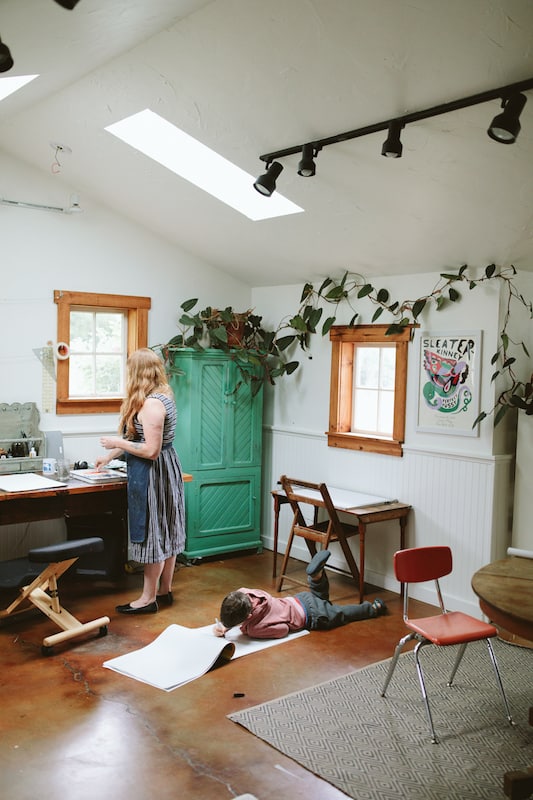
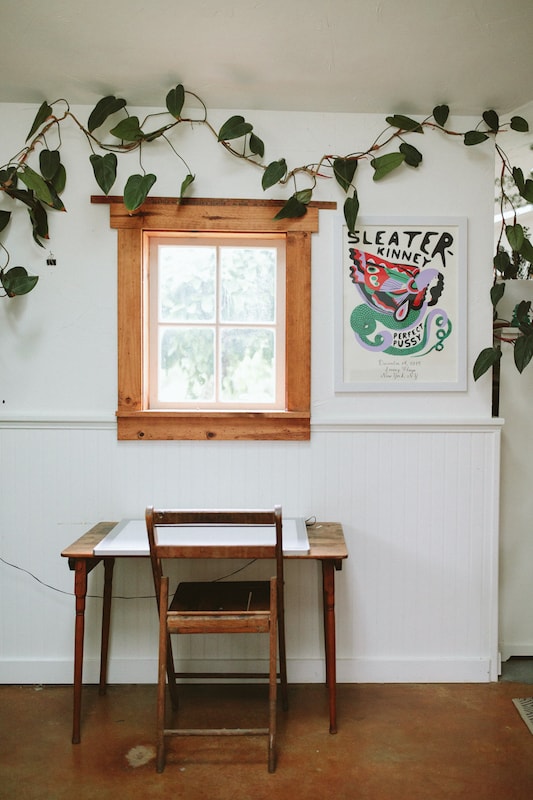
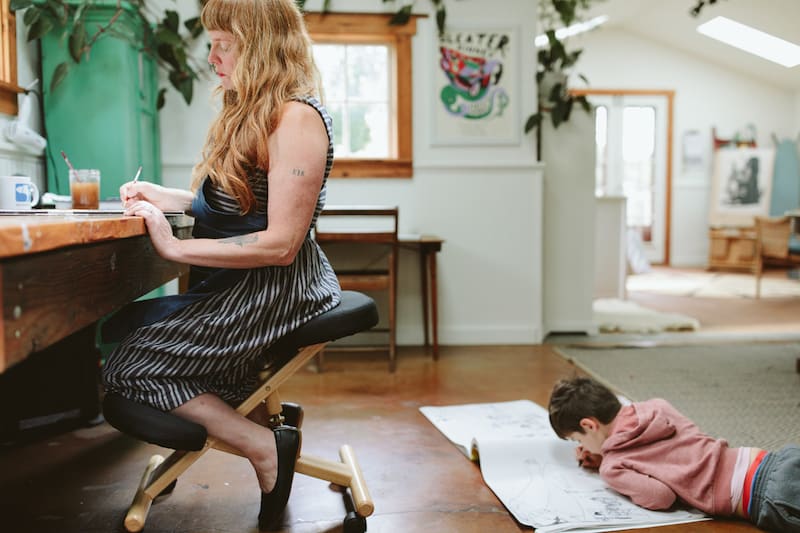

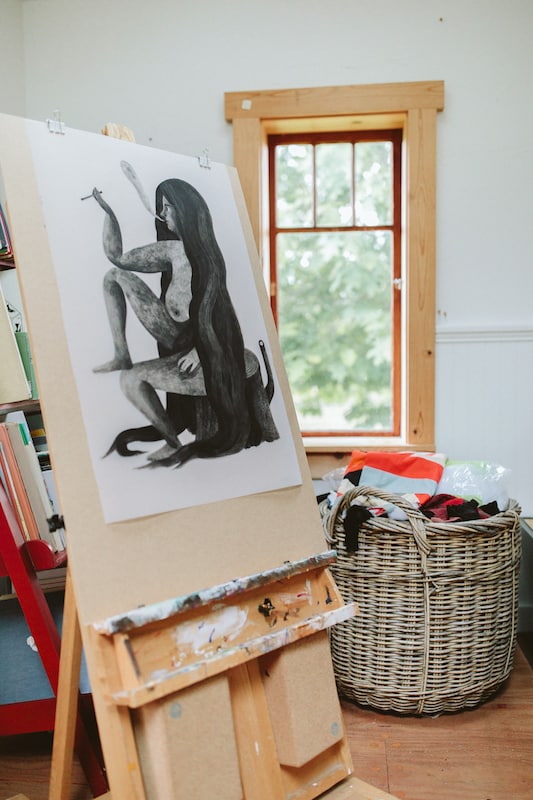
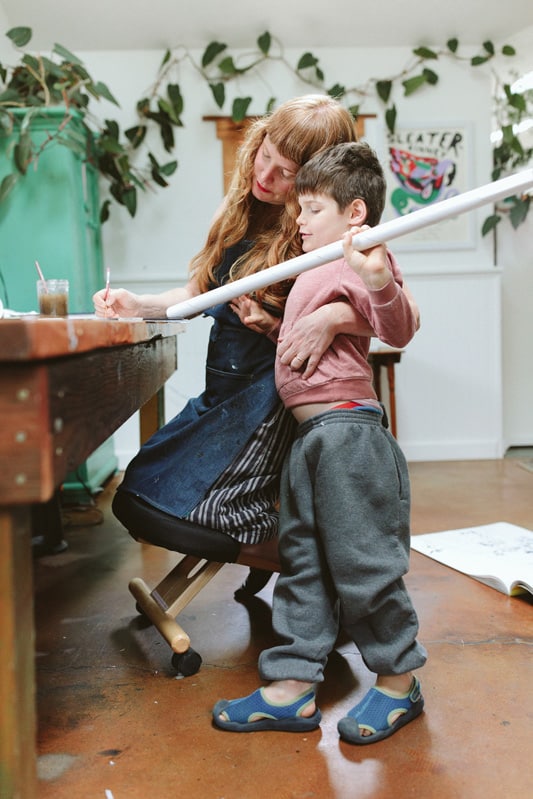
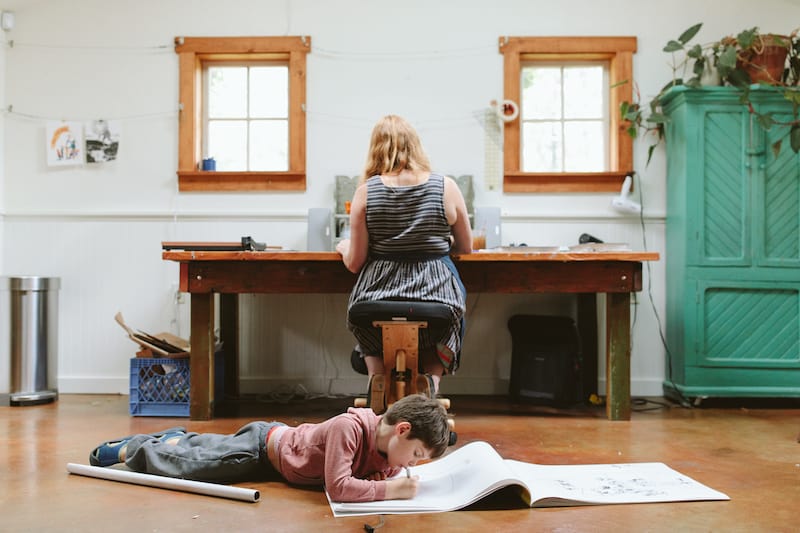
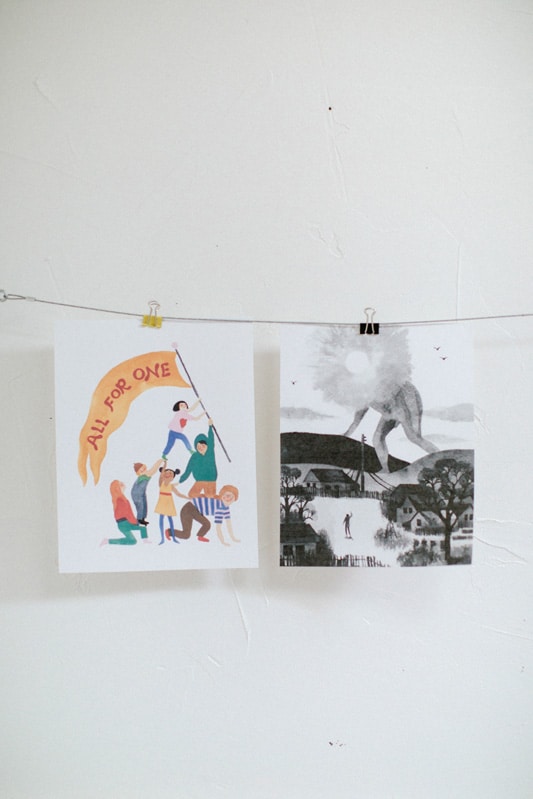
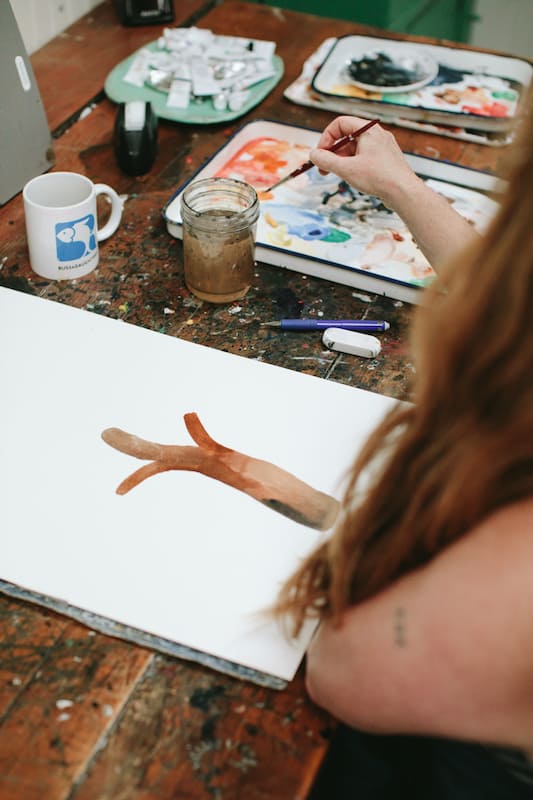
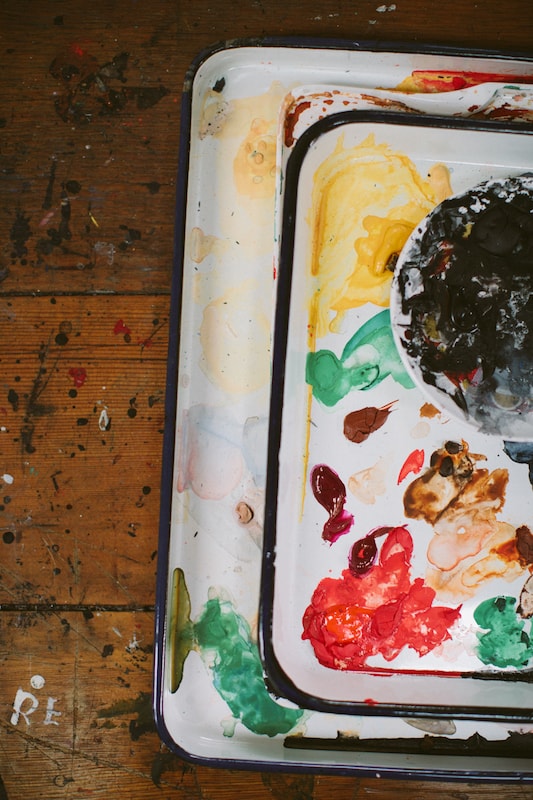
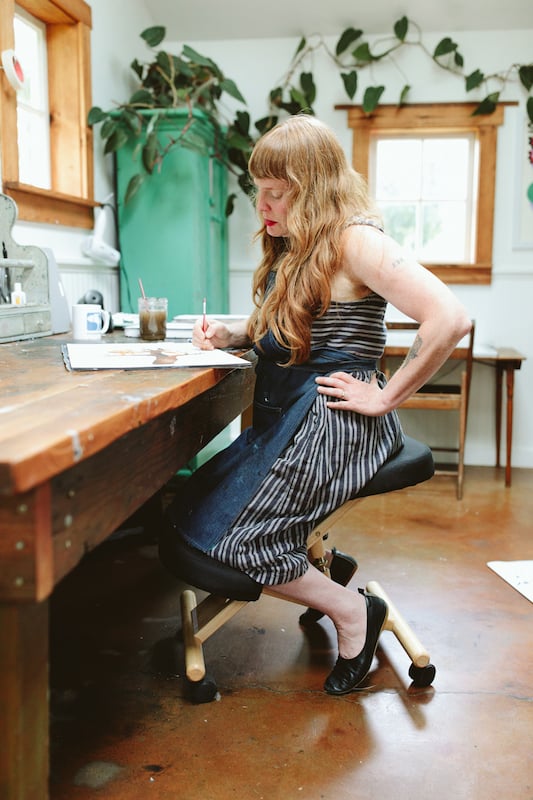
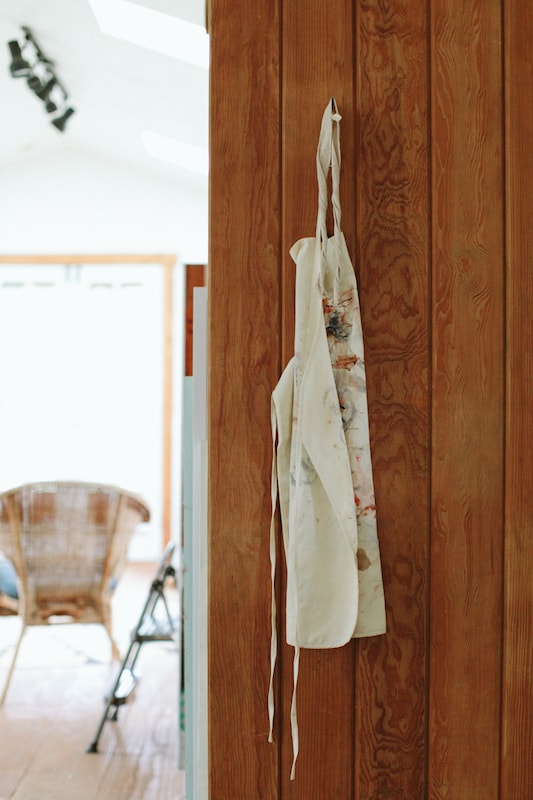
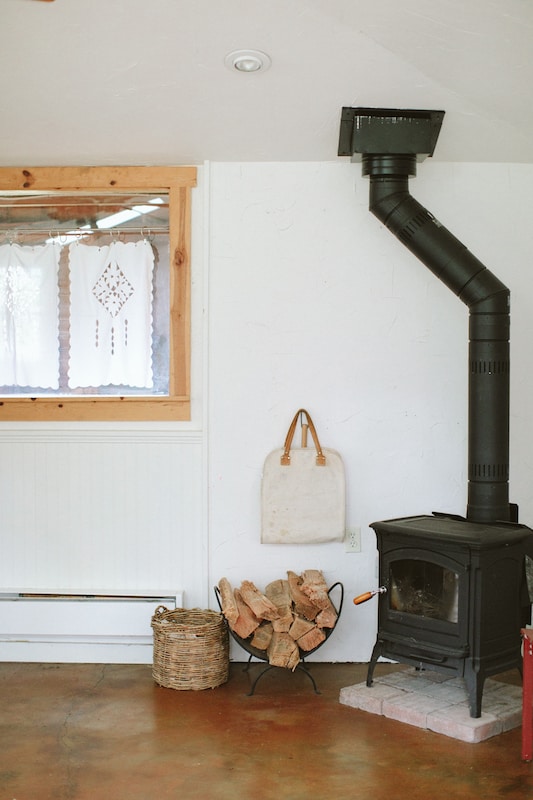
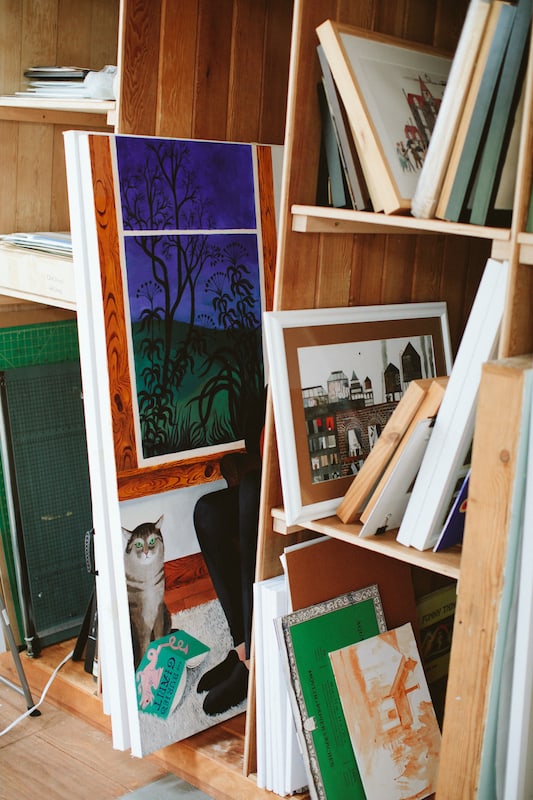
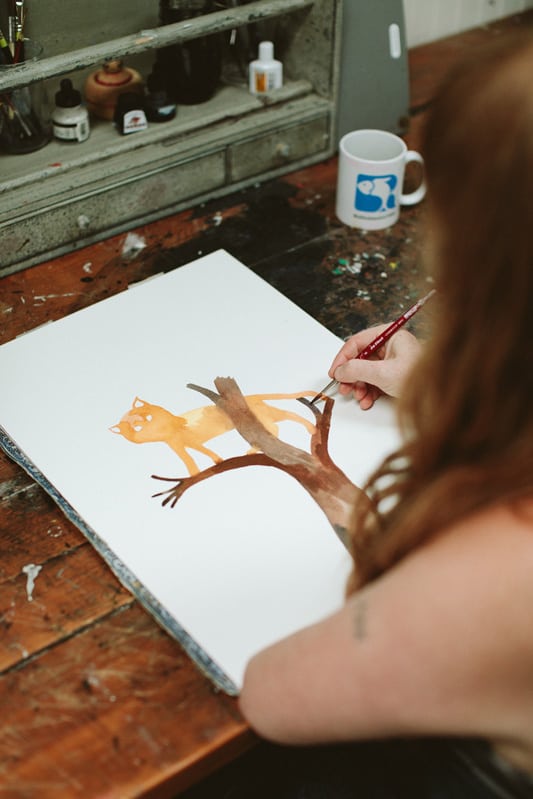
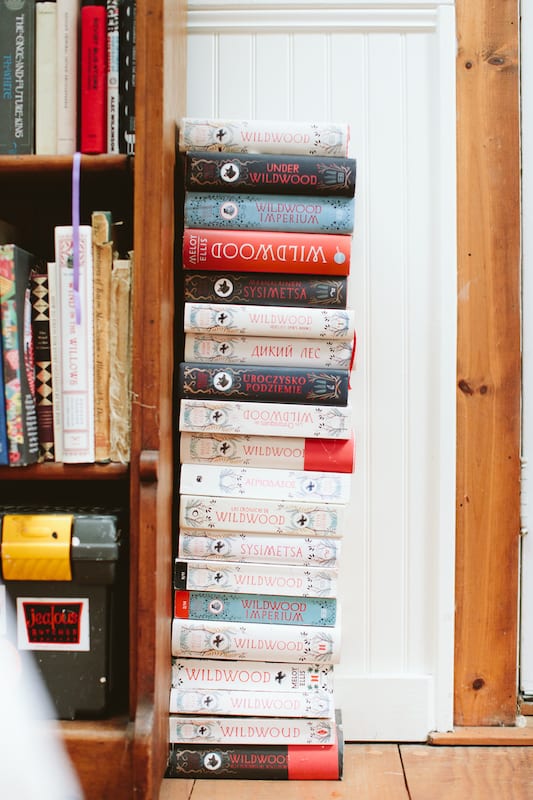
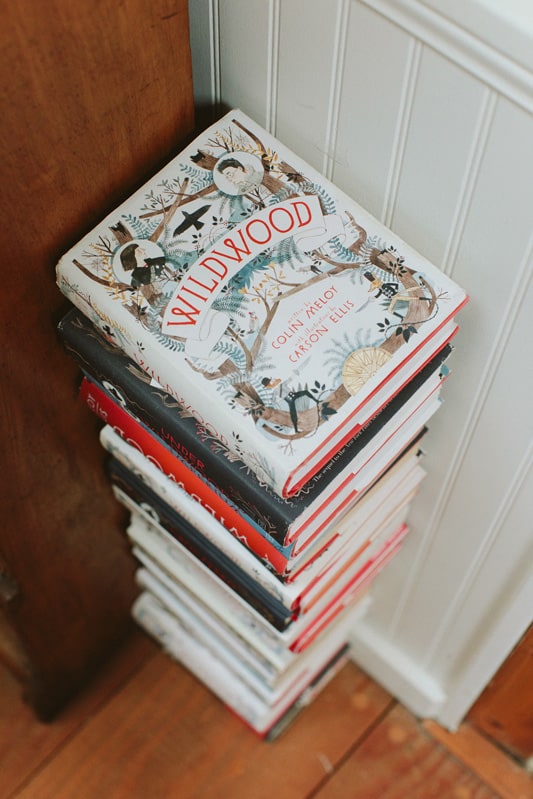
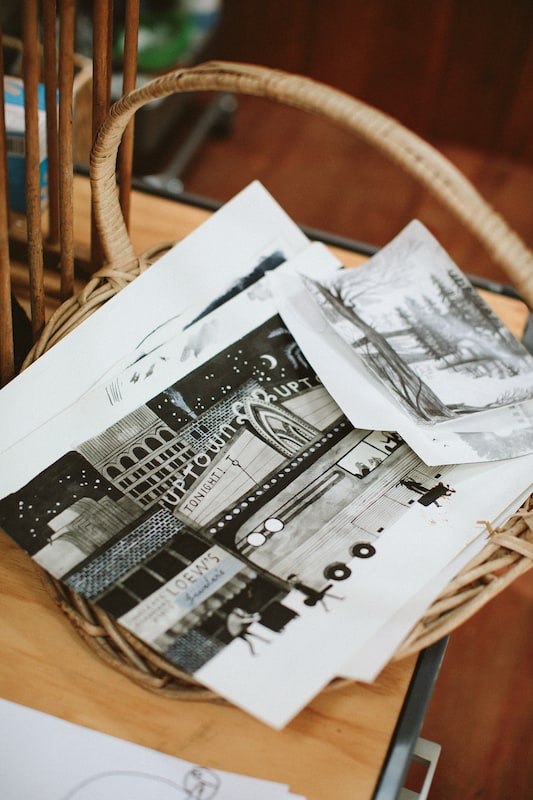
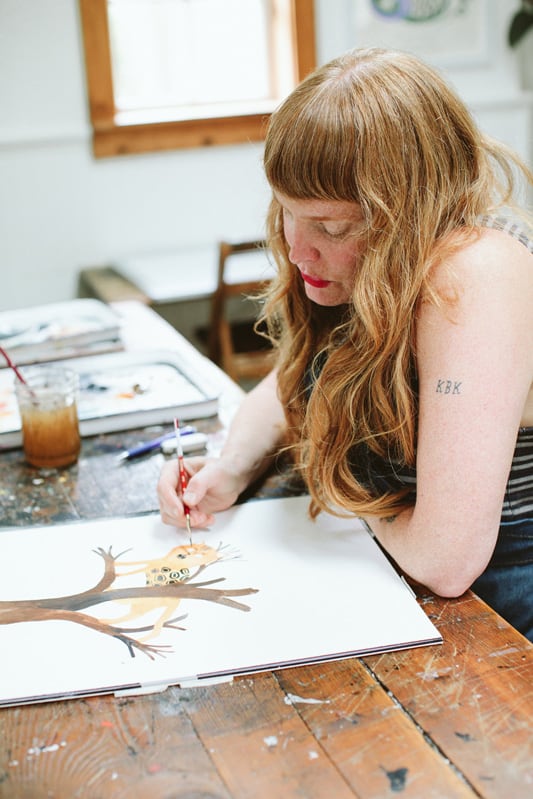
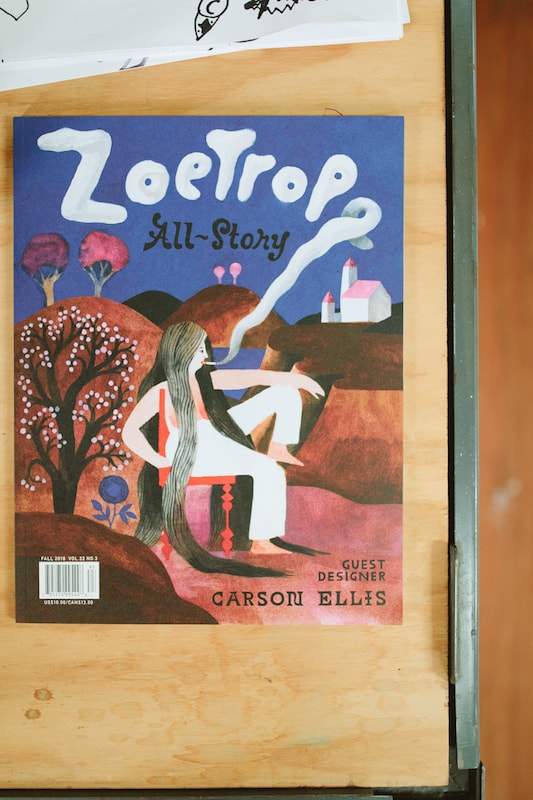
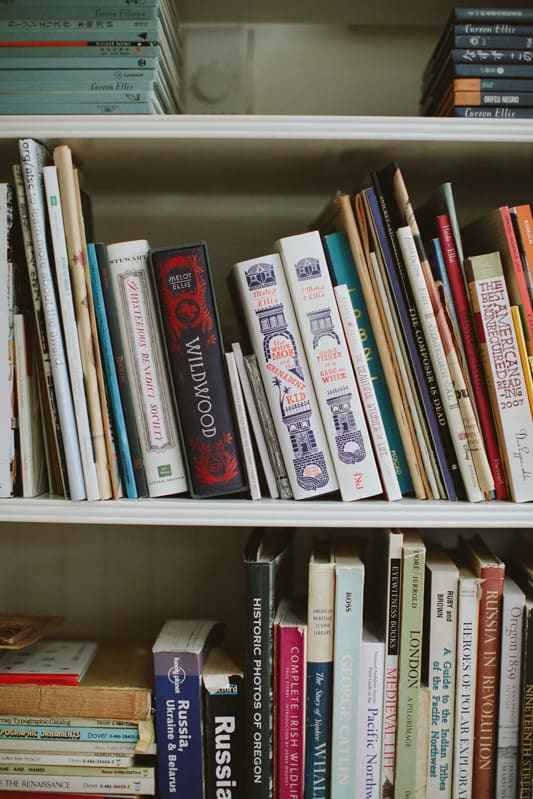
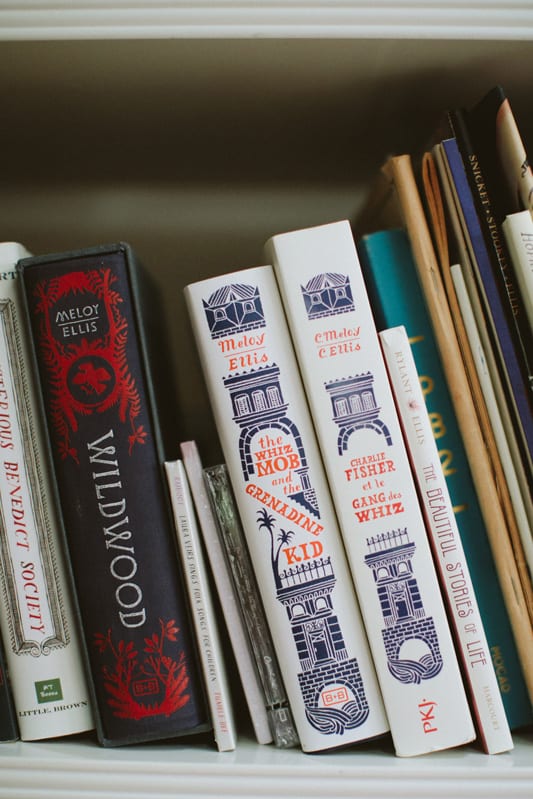
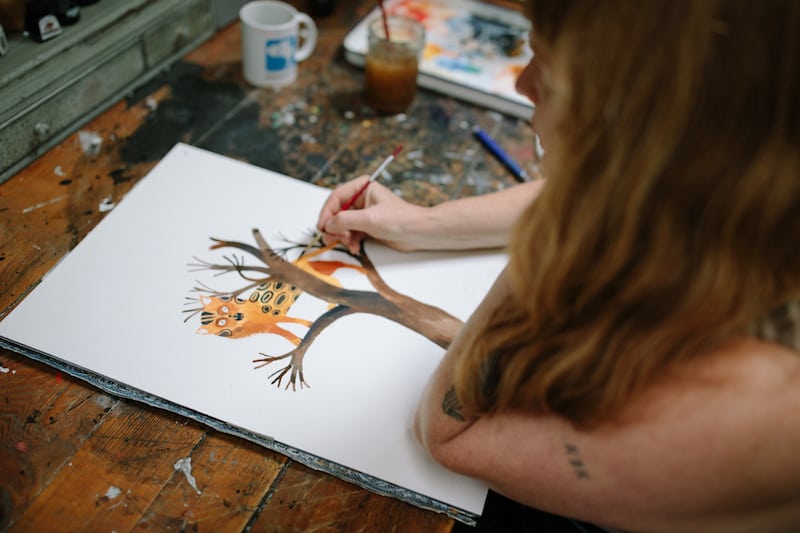
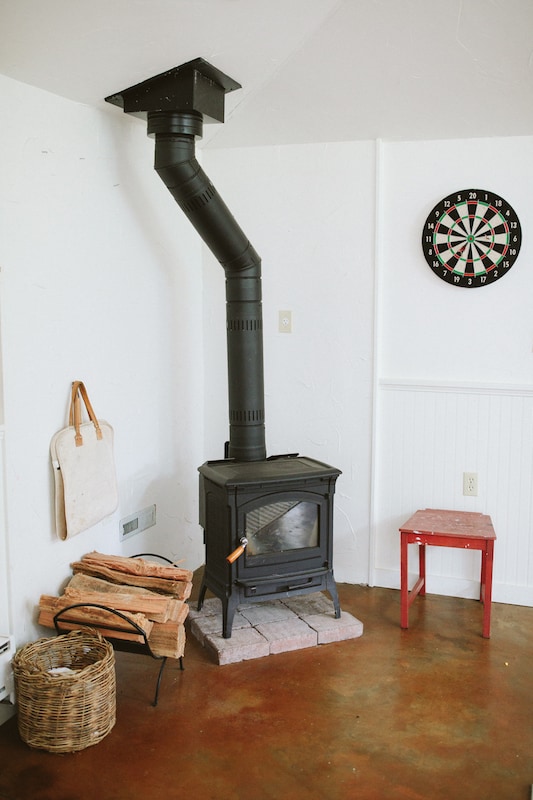
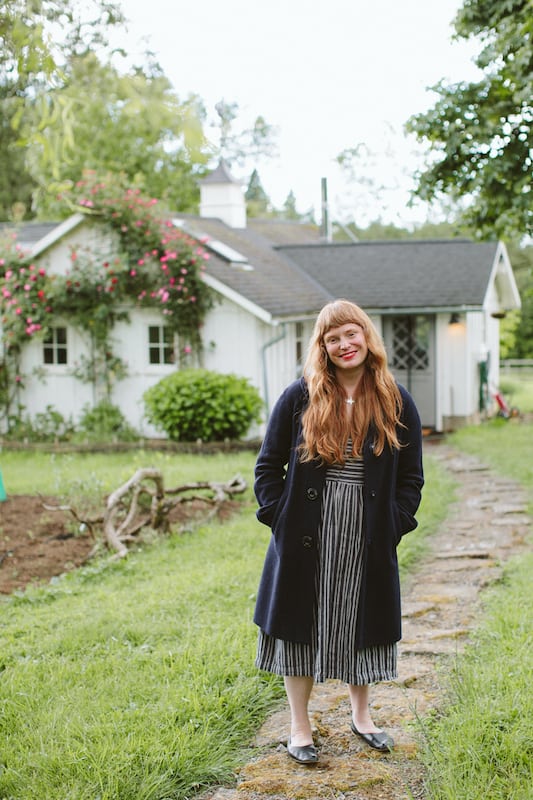
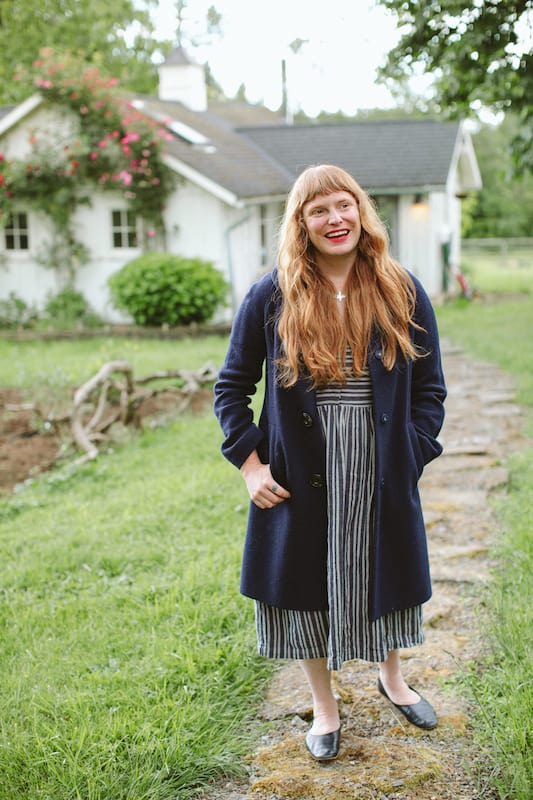
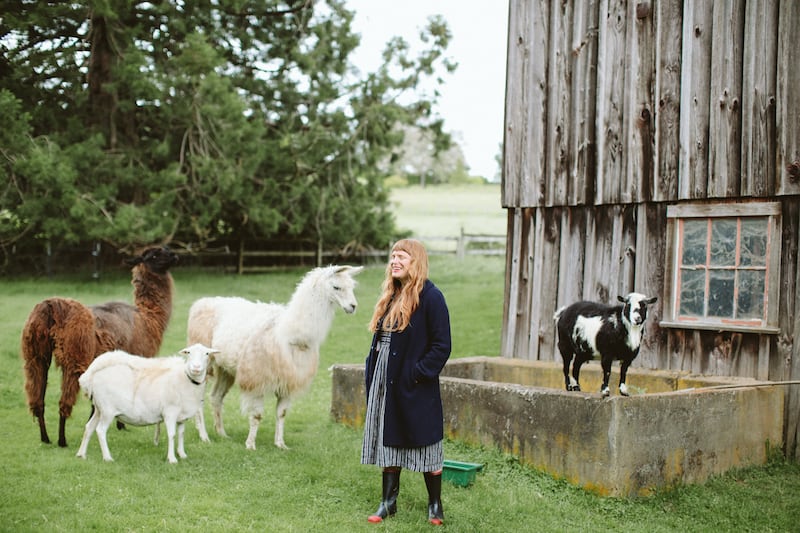
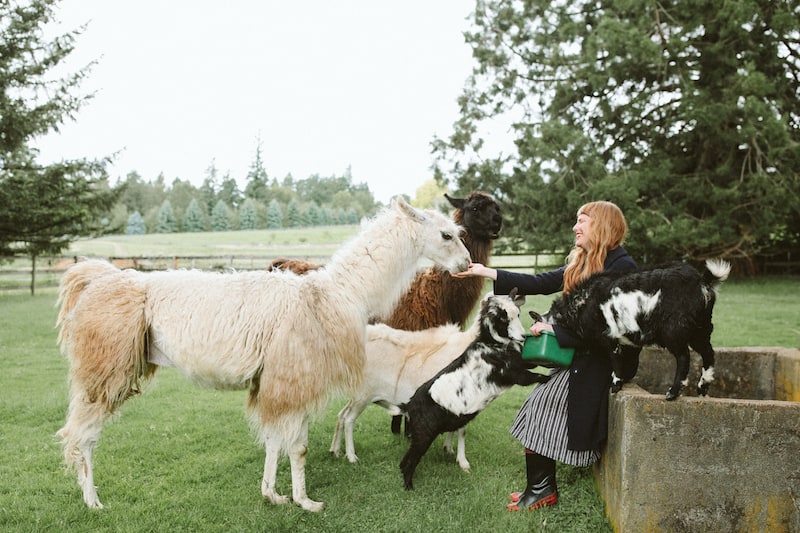
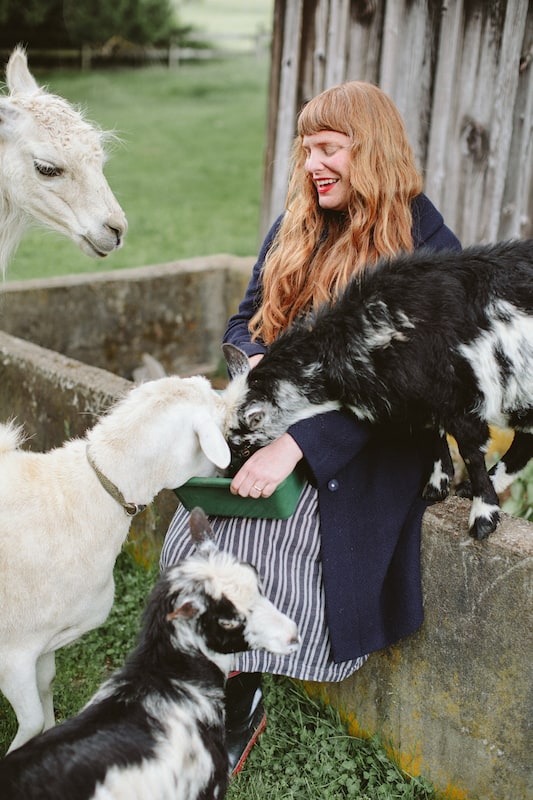
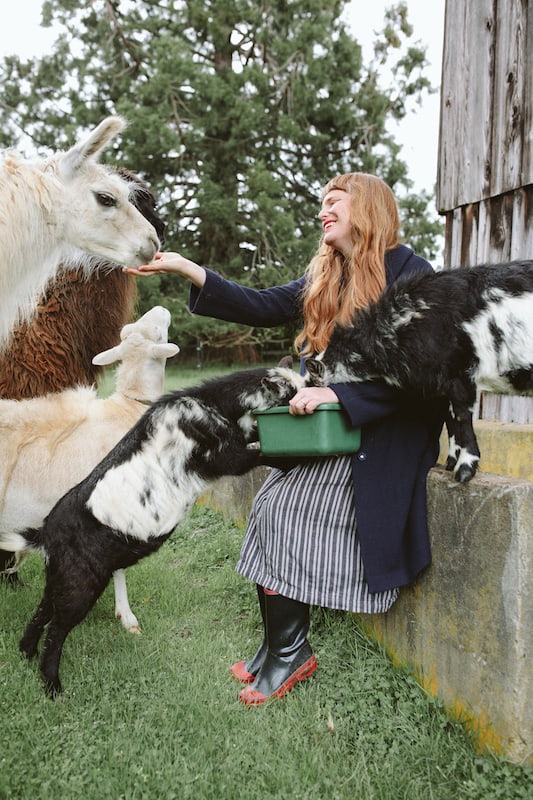
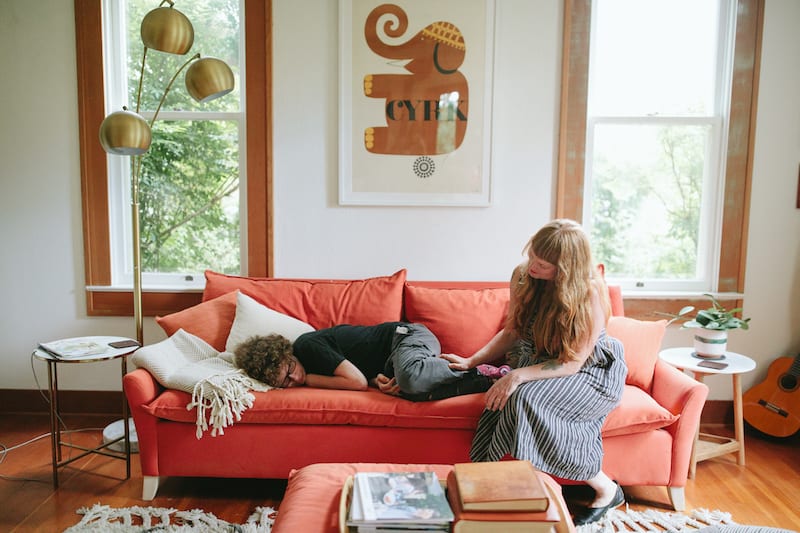
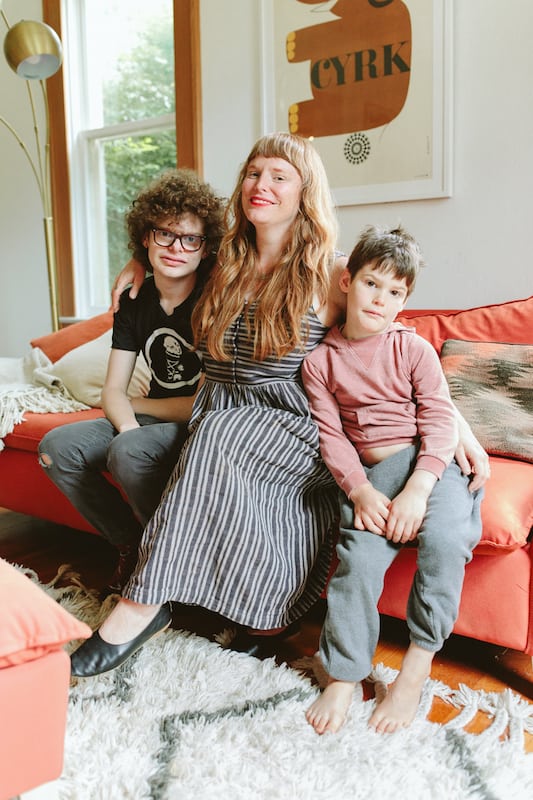
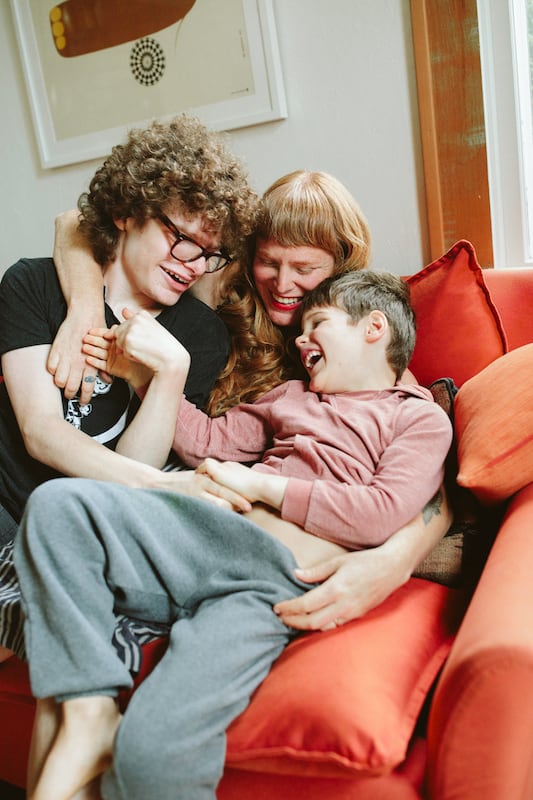
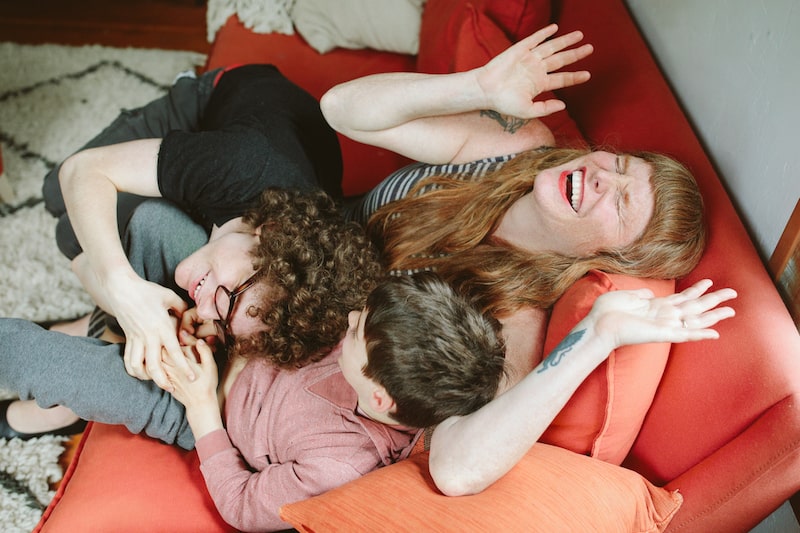
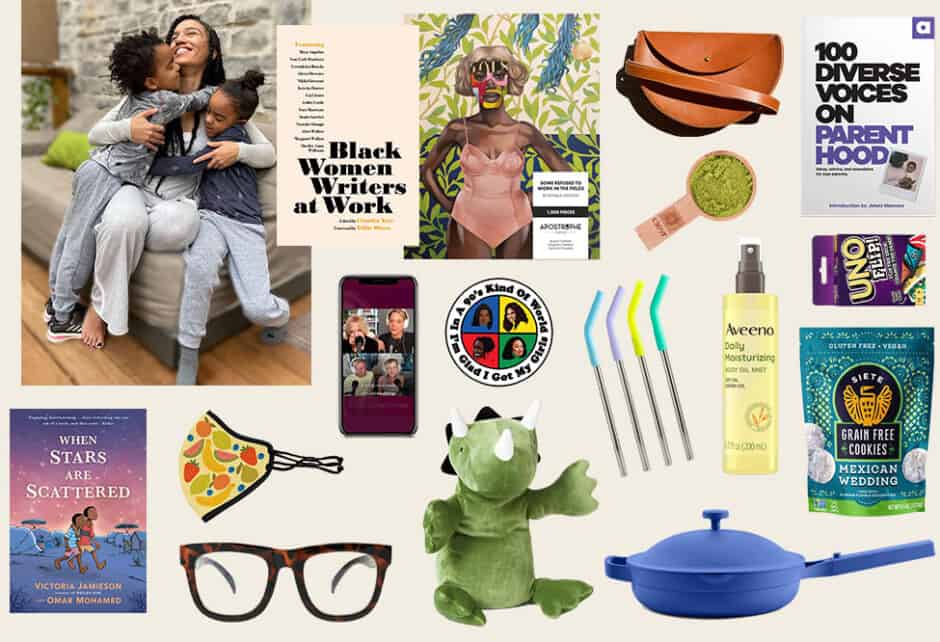



Carson this is so lovely, can you share where your studio chair is from? It looks awesome. Feel like my husband who is an architect probably needs that chair.
You have a great smile! …And all those copies of “Wildwood” (and the other two books in the series) in various languages…! It seems like you’ve found a great place to live and work. ^^
Hi Carson. I love your work. In particular the illustration you did for The New Yoker, July 29, 2019. Being a big Melville fan, I’m wondering if this illustration is for sale…either as a poster or artwork.
Please let me know.